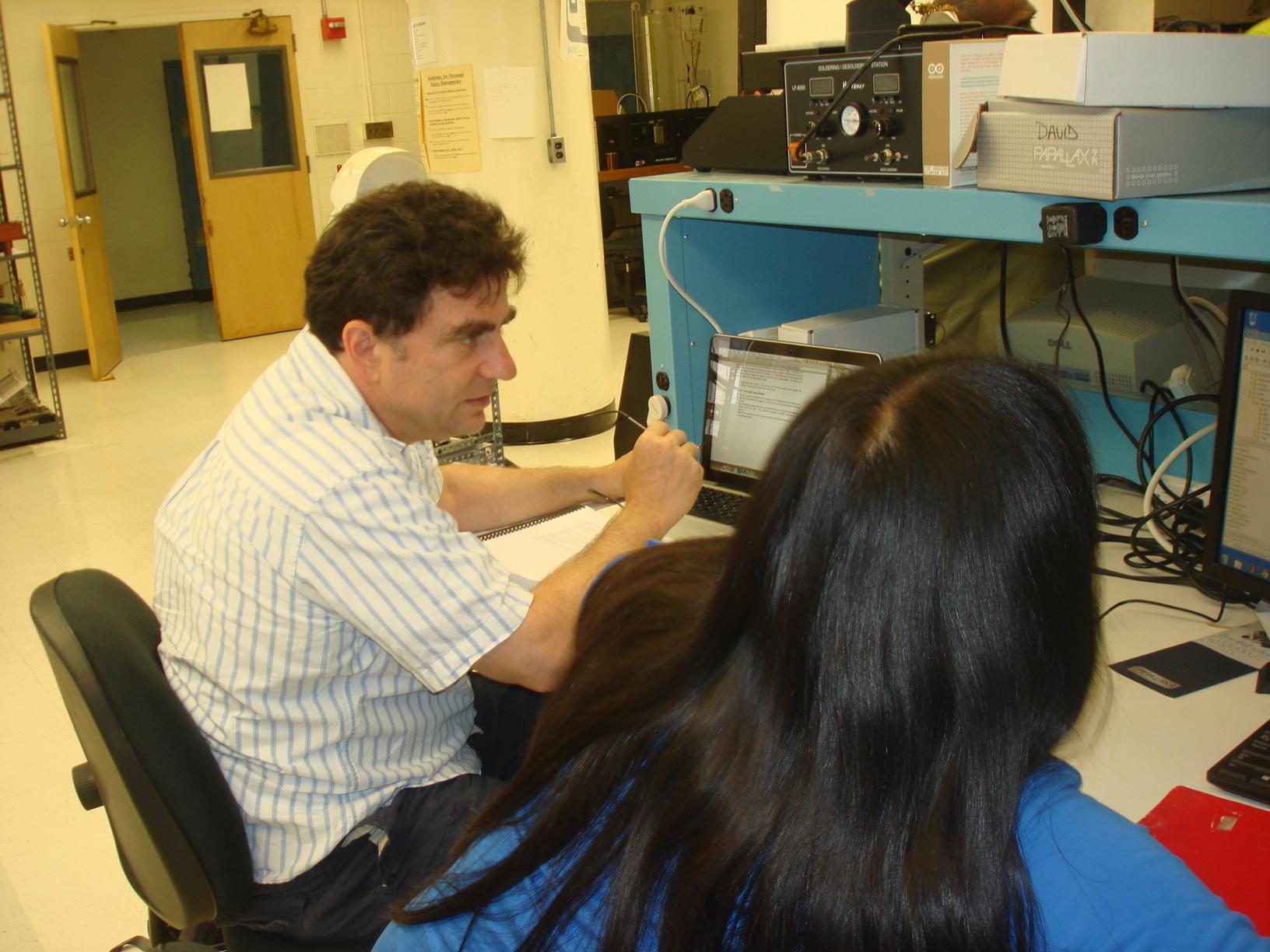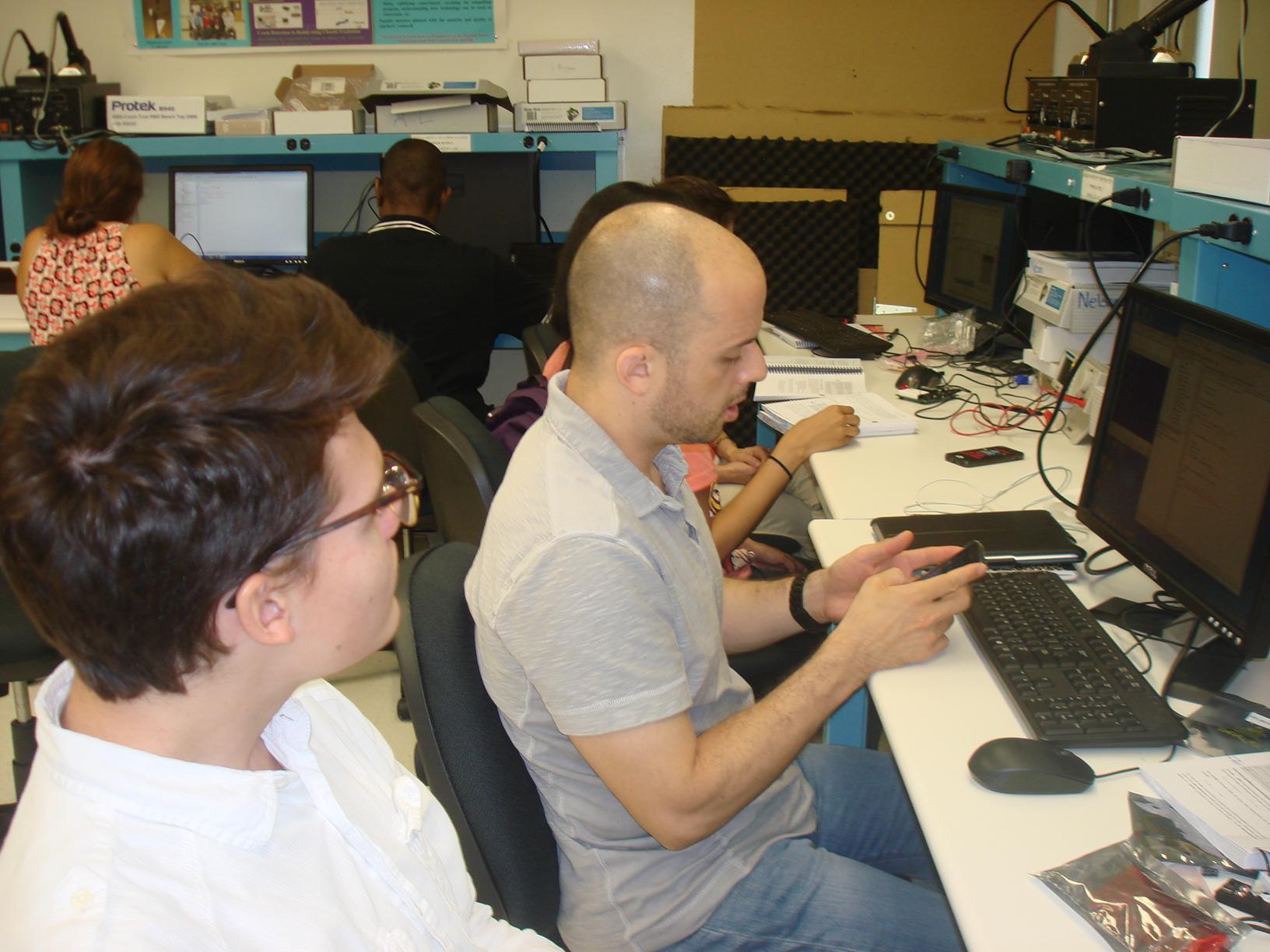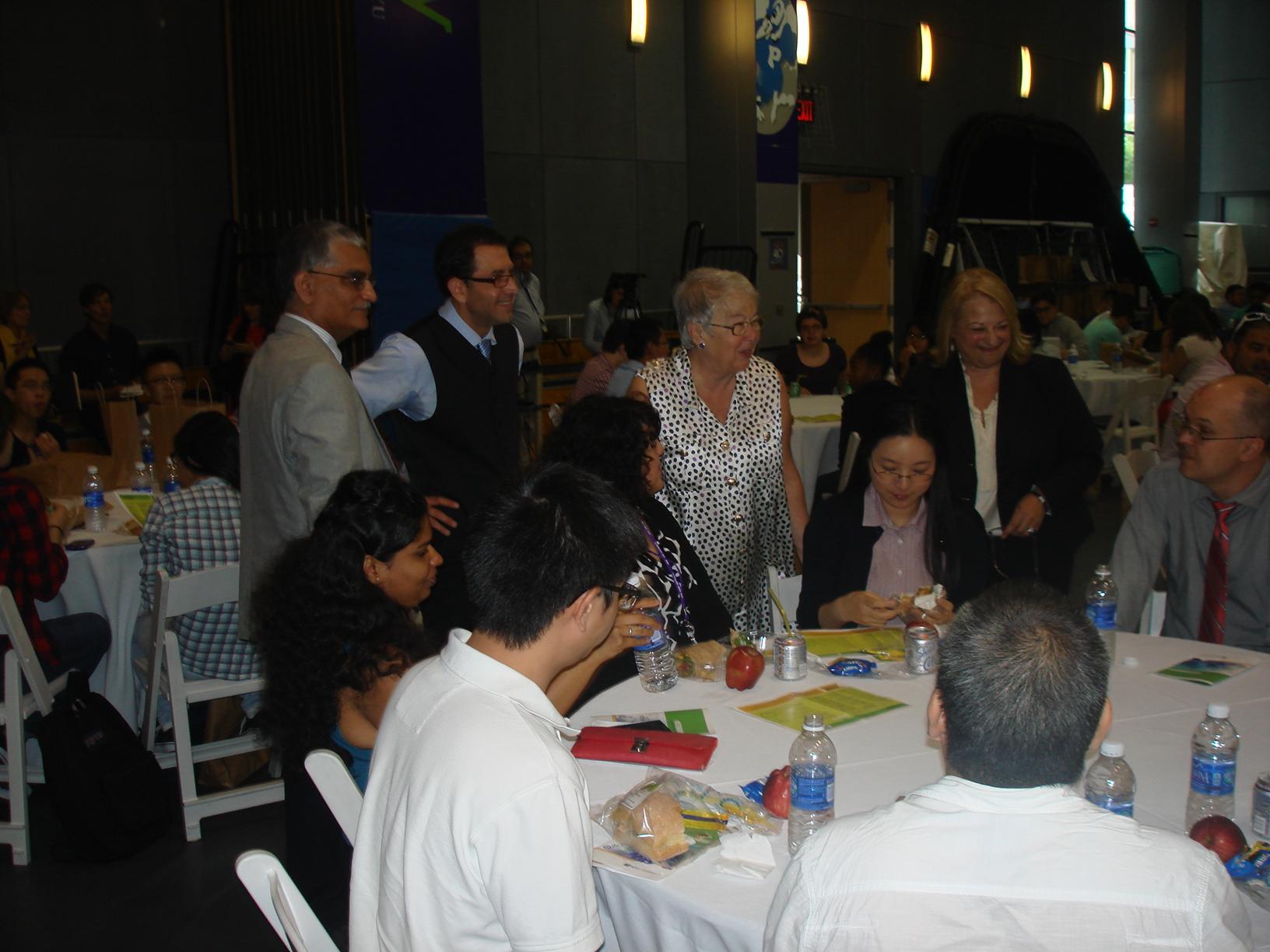July 9, 2014, Day 4 :
Prasad Akavoor
Upper School Science Teacher —18 years at Chapin. 25+ years of STEM teaching experience.
We started the day with a lecture on optoelectronics (“Lecture 6,” on the SMARTER website). We discussed photoresistors, photodiodes, phototransistors, and their applications. Light sensitive voltage dividers, switches, and relays are some of the applications we discussed. After the lecture, we had a better understanding of how yesterday’s experiments with the RC timers worked. We started working in the lab again and some of us continued to work on projects we had not completed yesterday. Some others proceeded to Chapter 7 of the “What’s a microcontroller?” manual and started building the circuits to measure light and programming their circuits.
At 11:00 we broke for lunch, which was a grand event – New York City Schools Chancellor Ms. Carmen Fariña was keynote speaker. Dr. Kurt Becker, Vice Dean of Academic Affairs, spoke briefly about NYU’s K-12 outreach programs.
Professor Vikram Kapila’s welcome remarks followed Dr. Becker’s. Professor Kapila told us about how the K-12 program started and how it has expanded to the present size. He mentioned that there has been a significant increase in the participation by students and teachers. As a result of the program, Professor Kapila said, teachers have been able to take many invaluable STEM related ideas into their classrooms and to enhance their teaching. A three-year study showed that students greatly improved their science and engineering scores as a direct result of active involvement in NYU’s K-12 STEM education programs. The NYU program has been instrumental in helping teachers take robotics programs into the classroom, for example. Ben Esner, Director of the Center for K-12 STEM Education, introduced Ms. Fariña. He recalled having worked with Ms. Fariña and told us about their joint effort in helping kids with autism and about their involvement in PS32. Ms. Fariña thanked everyone and assured the audience that NYU has a partner! “We need to be partners,” Ms. Fariña said, “so principals and teachers know that we are serious about STEM education in the city.” Her goal, she said, was to make NYC the largest city in the nation that makes a difference in STEM education. “We will get parents involved,” Ms. Fariña told the audience.
The lunch menu was fabulous and included a vegetarian option, too!
The afternoon session started in the lab. Most of us worked on a unit called “Frequency and Sound,” Chapter 8, of the “What’s a Microcontroller?” We created music by programming the BS2 to control a piezoelectric speaker to produce notes of different frequencies. There are many, many projects one could do using the programming tips given in the manual. Some of us got ourselves familiarized with subroutines on the BS2, while others successfully synthesized music (Beethoven’s 5th and 9th!) digitally. A few groups learned how to build and program a light meter gizmo using different RC constants. Jared gave a presentation on thermal sensors (DS 1620) and accelerometers (AD 592). We built and programmed a digital thermometer. We thought some of the documentation on the BS2 programming needed clarification. The program we found online didn’t really explain what some of the variables, constants, and operators were. However, the programs instructors clarified these issues for us.





